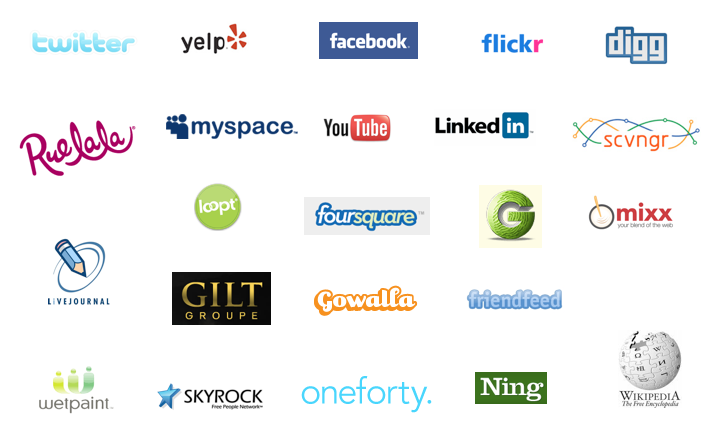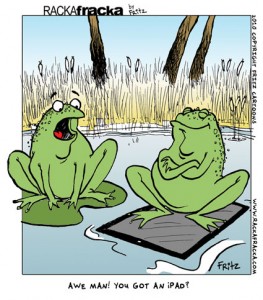I came across this interview with Sam Farber, OXO Founder, the other day. He spoke of Human-Centered Designs (HCD) and how his number one guiding philosophy was Universal Design: A product’s function should be immediately apparent, and anyone should be able to use it.

This really got me thinking about design principles in general. Is universal design the same as User-Centered Design (UCD)? Not quite. When Sam Farber speaks of HCD, the design principles are applicable to everyday tangible products from Oxo’s kitchen products to the iPhone to the door handle on your front door. Think industrial design.
In the last 2 decades UCD has been practiced by Designers and Product Managers alike to design desktop, web and mobile -based software to solve business and user problems. UCD is applicable to all of the intangible technology-based products that focus on user needs to drive design solutions and improve efficiency.
Now, in the last 6 years, we’ve seen a movement or more like a deluge social-centered web and mobile products: Facebook and Yelp started in 2004, Twitter in 2006, and then the first iPhone was introduced in early 2007 which provided the vehicle for the revolutionary iTunes App Store. Since opening its doors in July, 2008, the store provides 250,000+ mobile apps and counting.
Almost every new mobile app or website created these days has some element of ‘social’. The use of social interactions as a rule rather than an exception are used as THE main driver for user adoption and traffic. So, are there Social-Centered Design principles (SCD) to help guide these new products? The term excited me even if it didn’t exist (yet).
The characteristics that make up the term are out there, which brings up some other questions:
-
- Are Social Centered Design (SCD) principles the same or different from user-centered design (UCD) or human-centered design principles (HCD)?
- What are SCD principles and what should a Designer think about when designing products with social drivers?
At Rocket Farm Studios, every App we’ve designed to date has either a social element or social at its core. Here’s what we think about and what I think every Designer and Product Manger alike should incorporate when designing for social-centered products.
![]()
Top 5 Social-Centered Design (SCD) Principles:
1. Community
As people, it’s in our DNA to feel like we belong to part of a greater whole. People want to feel like they are part of a community with like minded people or opposite minded people passionate about the same subject. Apps should create a…
-
-
- Sense of belonging and ownership
- Enable sense of community
- Community driven and regulated content
-
2. Integration
More so than ever with the onset of mobile products and technology, products need to be designed as part of people’s daily ritual. Gone are the days when we only need to worry about how users interact with your product when sitting at home or at work in front of a computer. Your product needs to be integrated with the person’s lifestyle and everyday life allowing them to use it anywhere at anytime.
-
-
- Integrate with the user’s greater social network: Easily connect and share information with their other social applications (Foursquare, Twitter, Facebook, YouTube, LinkedIn, etc.)
- Multi-platform and Multimodal. Need to consider how it is used across multiple platforms and not just the web or just mobile.
Web, mobile, desktop, TV, easily ‘mashable’ (see Wikipedia’s definition of Web2.0)
-
3. Emotional
Unlike enterprise or productivity applications, social applications have an emotional aspect to it. UCD is more about making sure you’re solving user needs and problems. Social-centered products need to incite and anticipate emotional responses. It needs to be fun, bring delight, satisfaction or laughter to the user.
-
-
- For example, ‘Watching silly YouTube videos makes me laugh.’ ‘I love seeing what my friends’ are doing.’ ‘I like sharing my ideas with others in the community.’
- Remember, people choose to use social media products. People have to use enterprise and productivity applications in order to complete tasks.
-
4. Incentives
It’s the Me generation. For every one idea out there, it is competing with a dozen more just like it. Users will always ask ‘What’s in it for me?’ and those incentives and values need to be very clear for the user.
-
-
- What’s the reward for users to interact with the product? To create an account? To check-in? To provide content (photos, video, audio, personal statements, etc.)? To return to the site or app?
- Provide a clear accomplishments, recognition, and rewards system. Tap into the emotions of the user and make them feel special for contributing and using your app.
- Possible incentives are: Badging (making them ‘top dog’). To save time and money. To giveaway money. To be recognized in the community as an expert. To win or be the best.
- Provide personalization. People want to be part of a community, but still be unique.
- Personal identity: avatars, screen name, branding
- Personal sections/pages: ‘I want my own stuff.’
-
5. Contributions
People no longer only consume (pull) information from web and mobile products, they can and want to contribute (push) information, interactions, and opinions out to the community. One of the key successes to a social-centered product is its ability to acquire and aggregate quality user generated content and interactions in volume. The act and goal of contributing need to easy and clear for the user. How can your users contribute?
-
-
- Think distribution not centralization. Provide the push AND pull of information.
- Sharing as a means for distribution: email to friend, download, subscribe, invite, add to other social networks
- Contributing: ratings, reviews, favorites, check-ins, likes, dislikes, wikis, comments, tags
- Conversations: comments and replies
- 360 feedback: consumer to owner interactions
-
Conclusion
I don’t know what the future holds for web and mobile designs. What I do know, is designing social drivers into products will become an essential part of all designs. It’s not ‘Should we include social drivers into our product?’, but ‘How and what do we include?’.
The evolution of UCD is happening before our eyes to include social-centered design principles. Start integrating SCD into your design thinking today.
References
-
- Oxo’s Favorite Mistakes
- What is User-Centered Design?
- LukeW: Ideation and Design: Social Web Application Design




